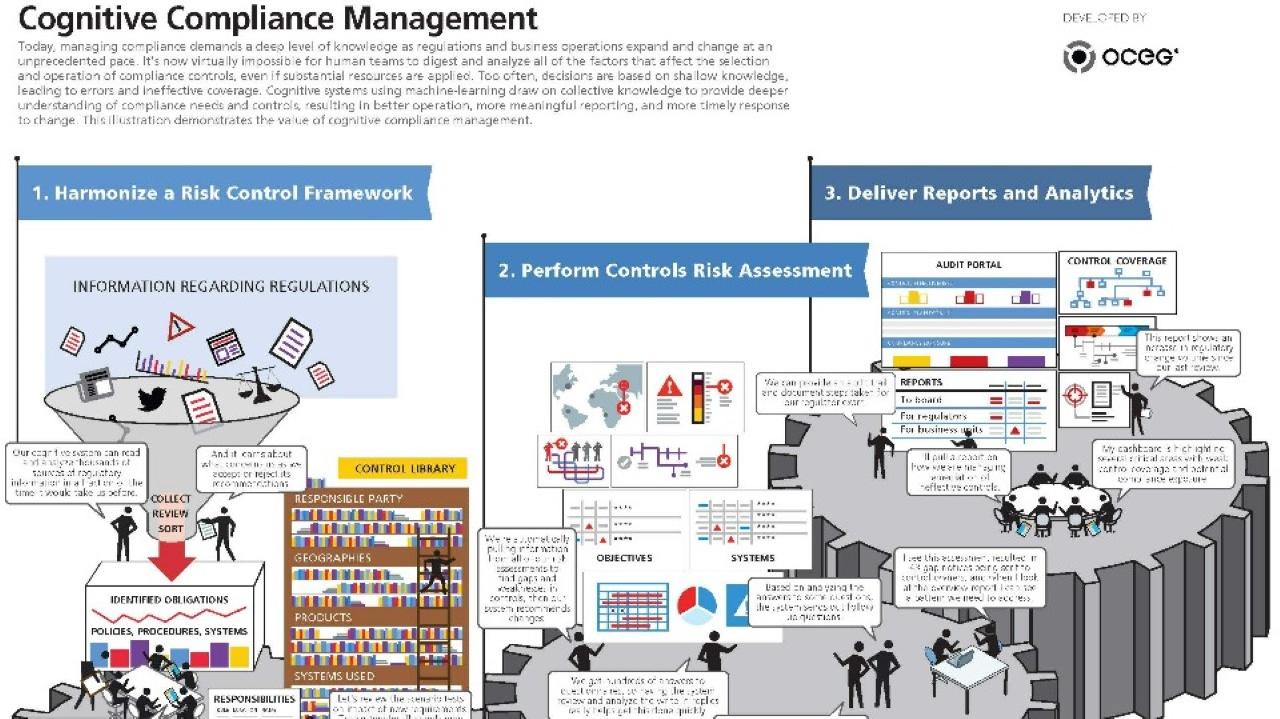

Cognitive, artificial intelligence systems available today can do the thinking that even the largest compliance team can’t complete in a timeframe that enables action.
Thinking about the right things in a focused way is essential to developing deep knowledge and understanding. Having that deep knowledge is foundational to creative problem identification and solving. Without deep knowledge, we are prone to having a “checked that box” attitude and continuing to do things “the way we always have” until something disastrous happens. Then, by the way, we do usually really focus and gain some deep knowledge, just a little too late.
So what is the answer? How can a CECO with limited re-sources, overtaxed staff, and too much raw data ever gain deep knowledge needed to continually improve the compliance capability he or she oversees? Perhaps the answer is to engage technology that can do some of that thinking for you.
Cognitive, artificial intelligence systems available today can do the thinking that even the largest compliance team can’t complete in a timeframe that enables action. Cognitive compliance systems can evaluate and rank the importance of obligations based on the activities of the organization and make recommendations on how to address them. But it doesn’t stop there. As recommendations are accepted or altered by the staff, the system begins to learn preferences and adjust recommendations accordingly. A cognitive system can track both internal and external changes that may call for reconsideration of controls and make new suggestions. A cognitive system can scan dozens or hundreds of obliga-tions from a range of regulations extremely quickly to identify similar ones and suggest common controls and identify relevant existing controls.
Featured in: Compliance

